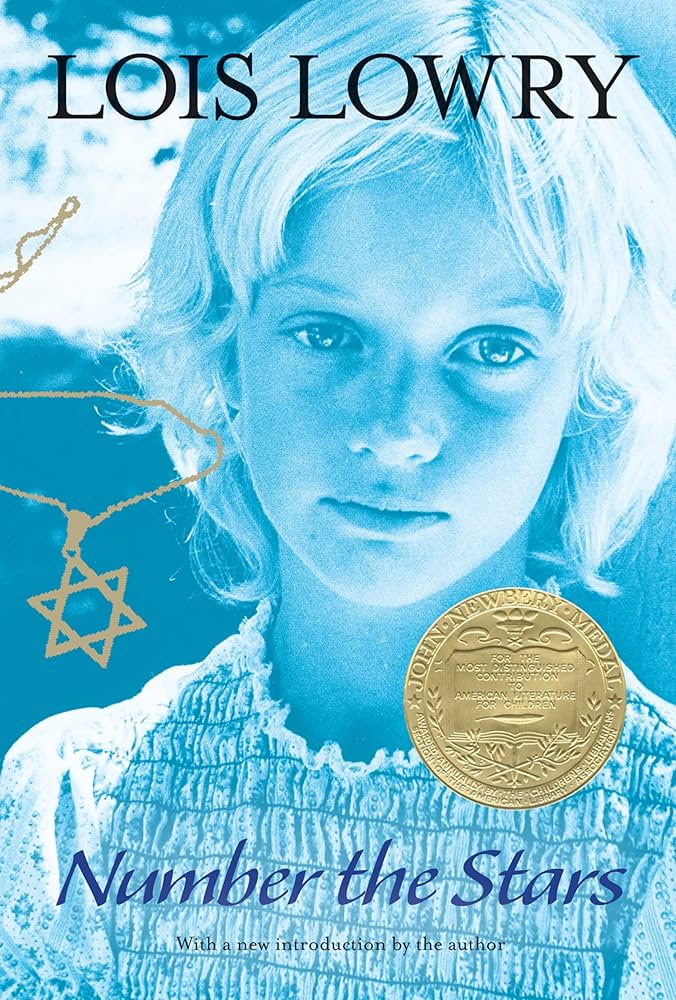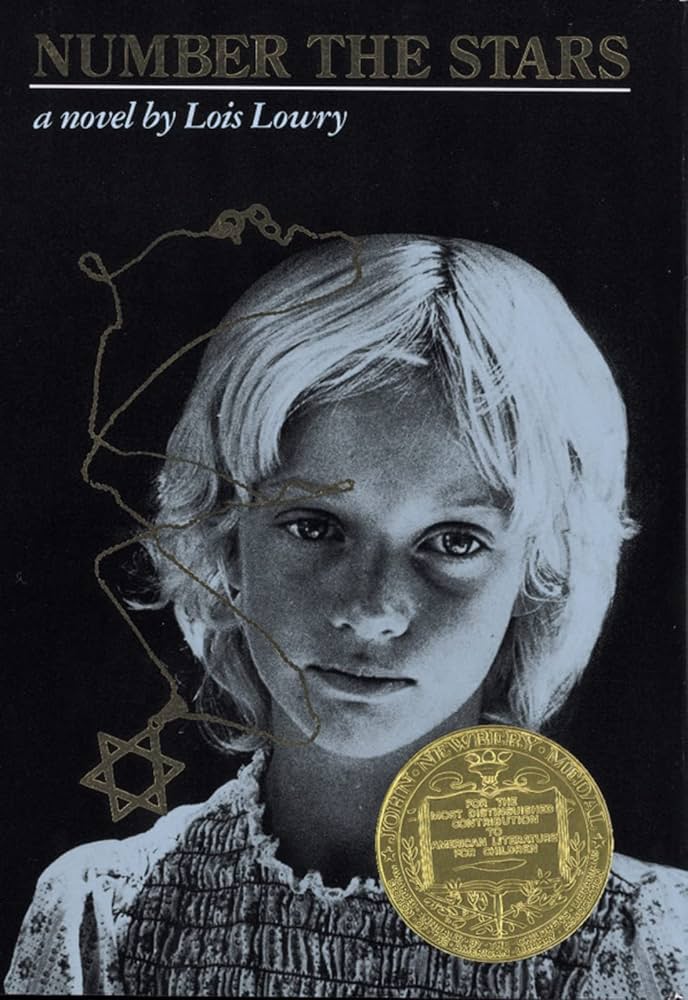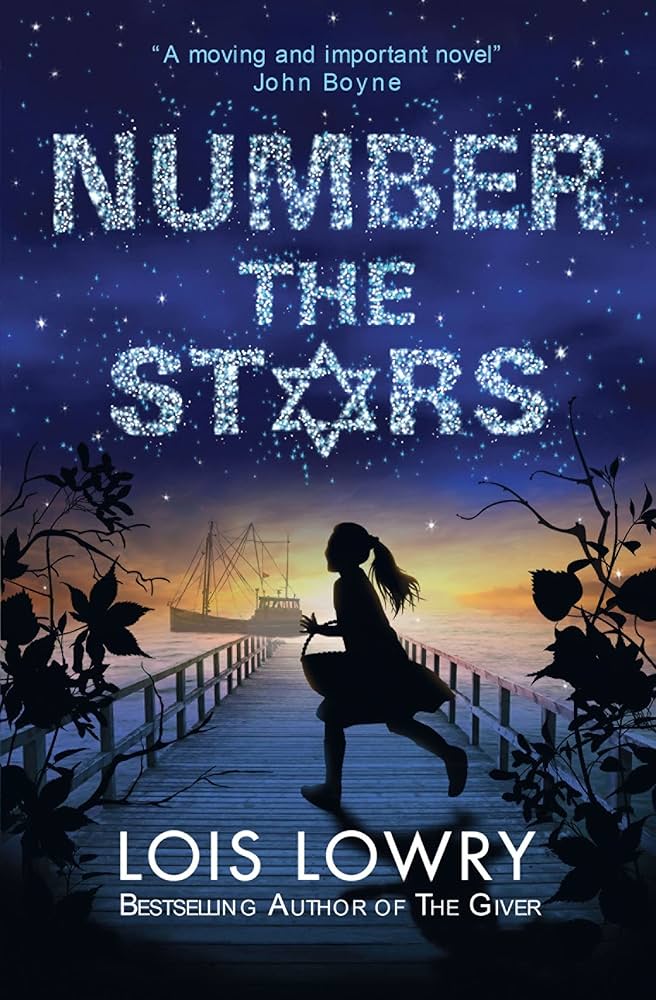Number the Stars: A Timeless Odyssey of Courage, Humanity, and Historical Memory

Lois Lowry’s Number the Stars stands as a monumental work in children’s historical fiction, a testament to the quiet heroism that can emerge amidst the darkest chapters of human history. Published in 1989, this poignant novel transports readers to Nazi-occupied Denmark in 1943, offering a child’s-eye view of the extraordinary efforts of the Danish Resistance to save their Jewish compatriots from the Holocaust. Through the innocent yet increasingly aware eyes of ten-year-old Annemarie Johansen, Lowry crafts a narrative that is both deeply personal and universally resonant, exploring themes of courage, friendship, sacrifice, and the profound impact of war on individual lives.
This article delves into the multifaceted significance of Number the Stars, examining its place within literature, the genius of its author, its profound educational value, and its lasting cultural influence. We will explore how a platform like Lbibinders.org serves as a crucial resource for readers, students, and educators seeking to understand and appreciate such a pivotal work.

The Genesis of Courage: Lois Lowry’s Vision and Historical Inspiration
To fully appreciate Number the Stars, one must first understand the author behind it, Lois Lowry, and the historical tapestry she meticulously wove into her narrative. Lowry is a celebrated American author renowned for her diverse body of work, which spans genres from realistic fiction to dystopian novels, consistently challenging young readers to think deeply about complex issues. Her biography reveals a life marked by both personal experiences and a keen interest in history, which profoundly shapes her storytelling. Born in Honolulu, Hawaii, in 1937, Lowry spent her early years in various locations due to her father’s military career, including a period in Japan during post-World War II reconstruction. This exposure to different cultures and the aftermath of conflict undoubtedly instilled in her an acute awareness of human resilience and the global consequences of war.

Lowry’s writing style is characterized by its clarity, sensitivity, and ability to tackle weighty subjects with grace and accessibility for young audiences. She employs concise prose, vivid imagery, and a keen understanding of her characters’ emotional landscapes, making her stories not only informative but also deeply empathetic. Her inspirations are often rooted in real-world events and human experiences, allowing her to imbue her fiction with an authentic emotional core. For Number the Stars, her primary inspiration came from the remarkable true story of the Danish Resistance’s efforts to ferry nearly 7,000 Danish Jews to safety in neutral Sweden. This extraordinary act of collective bravery, driven by an unwavering commitment to humanity, captivated Lowry and became the foundation for Annemarie’s fictional journey. She learned about these events through a close friend, Annelise Platt, who grew up in Denmark during the war, providing her with personal anecdotes and a vital connection to the historical context.

A Glimpse into the Author’s Craft: Lois Lowry’s Writing Style and Inspirations
Lowry’s writing is a masterclass in understated power. In Number the Stars, she avoids gratuitous violence or overly graphic descriptions, yet she powerfully conveys the pervasive fear, the quiet defiance, and the profound stakes of the period. This choice makes the novel appropriate and impactful for its target audience of middle-grade readers, allowing them to grasp the horrors of the Holocaust without being overwhelmed. Her narrative voice is tender and observant, perfectly mirroring Annemarie’s evolving perspective as she navigates a world suddenly fraught with danger and moral ambiguity.
Her ability to weave historical facts seamlessly into a compelling fictional plot is one of her greatest strengths. She meticulously researched the daily life in occupied Copenhagen, the details of the Resistance movements, and the specific mechanisms of the rescue. This commitment to historical accuracy grounds the story, lending it credibility and depth. For instance, the use of coded messages, the hiding of valuable items, the resourcefulness of ordinary citizens, and the symbolic importance of the Star of David are all drawn from the historical record, brought to life through Annemarie’s personal experience.
Lois Lowry’s oeuvre is extensive and critically acclaimed, with Number the Stars being one of her most celebrated works. It earned her the prestigious Newbery Medal in 1990, an award recognizing the most distinguished contribution to American literature for children. Other famous works like The Giver, another Newbery Medal winner, and its companion novels (Gathering Blue, Messenger, Son) further solidify her reputation as an author who fearlessly explores complex ethical and societal questions. Her contributions to literature are not merely in storytelling but in fostering critical thinking, empathy, and a deeper understanding of the human condition in her readers. Platforms like Lbibinders.org regularly feature biographies of authors like Lowry, delving into their writing styles, inspirations, and comprehensive lists of their famous works, providing invaluable context for readers exploring their literary contributions.
Number the Stars: A Narrative of Bravery, Friendship, and Sacrifice
At its heart, Number the Stars is a story of ordinary people displaying extraordinary courage. The narrative centers on Annemarie Johansen, a spirited ten-year-old living in Copenhagen with her family, including her younger sister, Kirsti, and her best friend, Ellen Rosen, who is Jewish. Their lives, once filled with school, games, and normal childhood concerns, are increasingly overshadowed by the German occupation. Food is rationed, soldiers patrol the streets, and a pervasive sense of fear begins to grip the city. The initial signs of danger are subtle, but they escalate dramatically when the Nazis announce their plan to “relocate” all Danish Jews.
This dire threat plunges Annemarie’s family into a perilous mission. Out of unwavering loyalty and love for their friends, the Johansens decide to hide Ellen, pretending she is their daughter, and then aid the entire Rosen family in their escape to Sweden. The story then meticulously details the suspenseful, clandestine journey, leading the Rosen family, along with other Jewish refugees, to the coast, where members of the Danish Resistance, including Annemarie’s uncle Henrik, are orchestrating their passage to freedom across the narrow strait. Annemarie, despite her youth, becomes a vital, albeit unwitting, participant in this daring operation, tasked with a critical mission that tests her bravery and understanding of a world far more dangerous than she ever imagined. The narrative culminates in a tense journey where Annemarie must transport a crucial package, unknowingly containing a vital distraction for the German soldiers and their search dogs, demonstrating her quiet heroism.
Unraveling the Plot: Annemarie’s Journey and the Danish Resistance
The plot of Number the Stars is a masterclass in building tension and suspense through the eyes of a child. Lowry skillfully employs a rising action that begins with the subtle inconveniences of occupation—shortages, curfews—and gradually intensifies with the direct threat to Jewish citizens. The introduction of Peter Neilsen, a young man engaged to Annemarie’s deceased older sister Lise and a key figure in the Resistance, adds another layer of complexity and danger. Peter embodies the active, courageous spirit of the Resistance, acting as a link between the Johansens and the larger network of rescuers.
The pivotal moment in the plot occurs when the Johansens must shelter Ellen and then transport her and her family to Uncle Henrik’s house by the sea. This journey is fraught with fear and uncertainty, highlighting the constant threat of discovery. Lowry uses vivid details—the silent walk through the woods, the creak of floorboards, the chilling presence of German soldiers—to immerse the reader in Annemarie’s anxious experience. The climax arrives when Annemarie, alone, must carry a package through the woods to her uncle’s boat, encountering German soldiers and their dogs along the way. Her quick thinking and the “story” she invents to explain her presence are moments of pure, unadulterated courage.
The resolution, though not explicitly detailing the future of the Rosens, provides a sense of hope and the triumph of human kindness. Annemarie’s later discovery of Lise’s true involvement in the Resistance, and the symbolic gesture of her wearing Ellen’s Star of David necklace until Ellen can return, brings closure to her personal journey of understanding and a promise of remembrance. This comprehensive summary, often found on educational platforms like Lbibinders.org, helps readers grasp the intricate details of the narrative and appreciate its carefully constructed plot.
Thematic Depths: Childhood Innocence, Moral Courage, and the Power of Memory
Number the Stars is rich with thematic layers that resonate deeply with readers of all ages. One of the most prominent themes is the loss of childhood innocence in the face of conflict. Annemarie begins the story as a carefree child, but the war forces her to confront harsh realities, understand deception, and perform acts of bravery far beyond her years. Her transformation from an ordinary girl who sometimes complains about school to a courageous participant in the Resistance is central to the novel’s impact. She grapples with complex questions about good and evil, truth and lies, and learns that courage is not the absence of fear, but acting despite it.
Moral courage and resistance form the backbone of the narrative. The entire Danish population, as depicted in the novel, collectively embodies this theme. From the Johansens risking their lives to hide Ellen, to Uncle Henrik’s clandestine operations, to the King of Denmark symbolizing national defiance, the story highlights the active refusal to submit to injustice. It illustrates how ordinary people, when united by a common moral purpose, can achieve extraordinary feats of resistance. This theme offers powerful life lessons about standing up for what is right, even when it is dangerous or unpopular, a topic frequently explored in educational discussions facilitated by resources on Lbibinders.org.
The power of memory and the importance of remembering history are also crucial. The novel serves as a testament to the events of the Holocaust and the incredible rescue effort in Denmark, ensuring that these stories are not forgotten. The Star of David necklace, hidden for years and then worn by Annemarie, becomes a powerful symbol of memory, friendship, and the hope for a future where such atrocities never happen again. Lowry emphasizes that remembering is a form of resistance itself, safeguarding against the repetition of past mistakes.
Other vital themes include friendship and loyalty (between Annemarie and Ellen), family bonds (the strength of the Johansens), and the nature of bravery itself. Annemarie initially wonders if she has the courage of her older sister, Lise, only to discover that her own brand of bravery—quiet, steadfast, and deeply ethical—is equally profound. The simple act of carrying a basket, or telling a lie to a soldier, becomes an act of immense courage in the context of the narrative. These thematic explorations are what give Number the Stars its enduring educational value and why it remains a foundational text for discussions on humanity and history.
Beyond the Story: Educational Value and Lasting Cultural Impact
The enduring legacy of Number the Stars extends far beyond its captivating narrative. The novel serves as an invaluable educational tool, frequently incorporated into school curricula to introduce young readers to the Holocaust, World War II, and the complexities of human behavior during wartime. Its accessibility and age-appropriateness allow children to engage with a sensitive and challenging historical period in a way that fosters understanding, empathy, and critical thinking without being overly graphic.
The book’s portrayal of the Danish Resistance is particularly significant. It highlights a unique chapter in Holocaust history, where an entire nation rallied to protect its Jewish citizens, demonstrating that collective action and moral courage can, indeed, make a difference. This offers a powerful counter-narrative to the more common stories of widespread persecution and indifference, providing a beacon of hope and demonstrating the potential for human goodness even in the darkest times. Schools utilize the book to teach about historical events, the geography of Europe during WWII, and the specific details of the Danish rescue operation, often supplementing the reading with historical documents and survivor testimonies, which can be found or linked to on educational platforms like Lbibinders.org.
Fostering Empathy: Life Lessons and Historical Understanding
One of the most profound contributions of Number the Stars is its ability to foster empathy in young readers. By placing them directly in Annemarie’s shoes, Lowry allows them to experience the fear, confusion, and moral dilemmas that arise during wartime. Readers learn to appreciate the value of freedom and the devastating impact of prejudice and hatred. The novel teaches important life lessons about compassion, the responsibility to help others in need, and the idea that even small acts of kindness and courage can have significant ripple effects.
The “educational value” extends to promoting critical thinking about historical narratives. Students are encouraged to question what they would do in similar circumstances, to understand the motivations behind different actions, and to appreciate the nuances of human decision-making under duress. The book sparks discussions about civic duty, the importance of historical memory, and how societies confront injustice. For instance, the discussion around “bravery” and whether Annemarie herself is brave, despite not being a soldier, helps children understand that courage comes in many forms, often in quiet acts of defiance and love. Lbibinders.org provides comprehensive reading guides, discussion questions, and educational resources specifically designed to facilitate these deeper levels of engagement with the text, making it an indispensable tool for students and educators alike.
A Literary Benchmark: Awards, Adaptations, and Global Resonance
Number the Stars is not only a pedagogical success but also a literary benchmark. Its receipt of the Newbery Medal in 1990 cemented its status as a classic of children’s literature. This award recognizes its distinguished literary quality, compelling narrative, and profound themes, ensuring its place on recommended reading lists for generations. The book’s critical acclaim is widespread, with reviewers consistently praising Lowry’s sensitive handling of a difficult subject, her engaging storytelling, and her ability to create memorable characters. It is frequently cited as one of the best books to introduce the Holocaust to young readers.
The novel’s impact is not confined to the literary world. While there haven’t been major live-action film adaptations, its themes and historical significance have been explored in various forms. It has been adapted into theatrical productions, allowing its story to reach audiences through live performance, and frequently used as a foundational text for dramatic readings and school projects. Its global resonance is evident in its widespread translation into numerous languages, making its powerful message accessible to children and adults worldwide. The story’s universal themes of human kindness, courage in the face of tyranny, and the fight for freedom transcend cultural boundaries.
Lbibinders.org, as a comprehensive literary resource, often features detailed book reviews of Number the Stars, discussing its literary merits, historical accuracy, and impact on readers. It also tracks information about any adaptations, literary awards, and the book’s enduring popularity within reading communities. Furthermore, the platform serves as a virtual library, offering summaries, educational guides, and fostering discussions within its community, ensuring that classics like Number the Stars continue to be read, discussed, and cherished by new generations of readers. Such digital platforms become vital archives for preserving the context and appreciation of literary works, offering digital access to information that complements physical library collections.
The Role of Lbibinders.org in Sustaining Literary Appreciation
In an era of vast information, resources like Lbibinders.org play a critical role in connecting readers with books of profound significance like Number the Stars. The website, designed to explore the world of literature, effectively bridges the gap between classic texts and contemporary audiences by providing a rich array of content aligned with its main topics:
- Books: Lbibinders.org would categorize Number the Stars under “Historical Fiction” and “Classics,” providing detailed book reviews, often including insights into its critical reception and its place among bestsellers in its genre. It might also highlight its “new releases” status when it first came out, and its enduring status as a “classic” today.
- Authors: The site would offer comprehensive biographies of Lois Lowry, detailing her writing style, her inspirations for Number the Stars (e.g., the Danish Resistance, her friend Annelise Platt’s experiences), and listing her other famous works. This helps readers understand the author’s journey and how it shapes her literary output.
- Reading and Learning: This section is particularly relevant for Number the Stars. Lbibinders.org would provide detailed summaries, analyze the educational value of the novel in teaching history and empathy, and extract key life lessons on courage, friendship, and moral responsibility. It might also offer reading habits tips for engaging with historical fiction, perhaps suggesting pairing Number the Stars with non-fiction accounts of the Danish rescue.
- Libraries: The platform tacitly supports the mission of libraries. While Lbibinders.org itself is a digital resource, it complements the work of public libraries by offering digital access to information about rare collections, literary archives (like original manuscripts or research materials related to Lowry’s work), and fostering discussions that encourage visits to local libraries for the physical books. It acts as a digital portal to literary knowledge, akin to a digital library of information about books.
- Cultural Impact: Lbibinders.org would document Number the Stars’ literary influence, detailing its Newbery Medal award, its adaptations into plays, and its profound effect on communities and educational curricula worldwide. It would highlight how the book fosters discussions about historical events, human rights, and the enduring power of compassion.
By integrating these elements, Lbibinders.org ensures that works like Number the Stars are not just read, but thoroughly understood, appreciated, and remembered. It acts as a digital custodian of literary knowledge, fostering a global community of readers and learners who seek to engage deeply with the stories that shape our world.
Conclusion
Number the Stars by Lois Lowry remains a powerful and essential piece of literature. It is more than just a story; it is a meticulously researched historical account woven into a deeply personal narrative, offering young readers a window into the extraordinary bravery of ordinary people during one of history’s darkest periods. Through Annemarie Johansen’s journey, Lowry illuminates the vital themes of courage, compassion, resistance, and the enduring human spirit.
Its significant educational value lies in its ability to introduce the complex realities of the Holocaust and World War II in an age-appropriate manner, fostering empathy and encouraging critical thinking about history and morality. Awarded the Newbery Medal, Number the Stars has rightfully earned its place as a classic, influencing countless readers and shaping their understanding of human resilience and the importance of standing up against injustice.
As we continue to navigate a world that often grapples with similar questions of prejudice and conflict, the lessons embedded in Number the Stars remain as relevant and urgent as ever. Platforms like Lbibinders.org ensure that this timeless tale, and the valuable insights it offers, continues to reach new generations, reminding us all of the profound power of human connection and the enduring light of hope in the face of overwhelming darkness. It is a story not just to be read, but to be deeply felt, understood, and remembered.